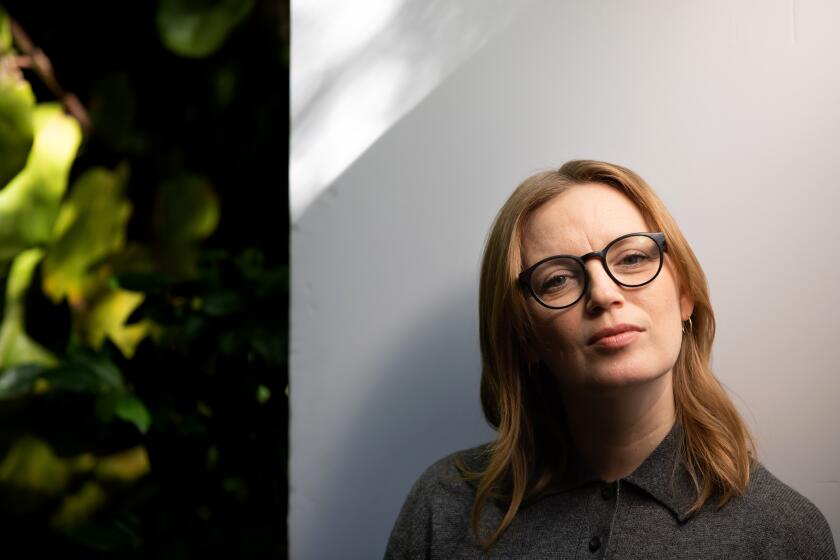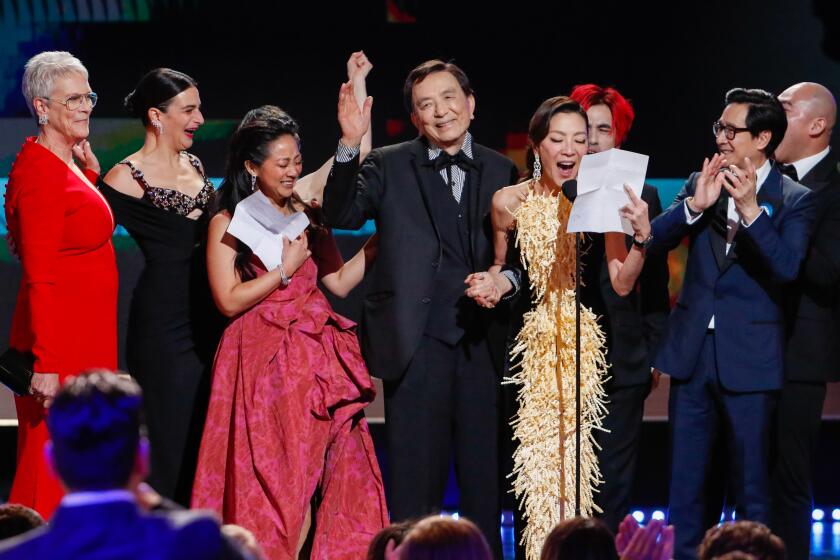In its author’s tiny hometown, Mennonites can’t get enough of Oscar nominee ‘Women Talking’
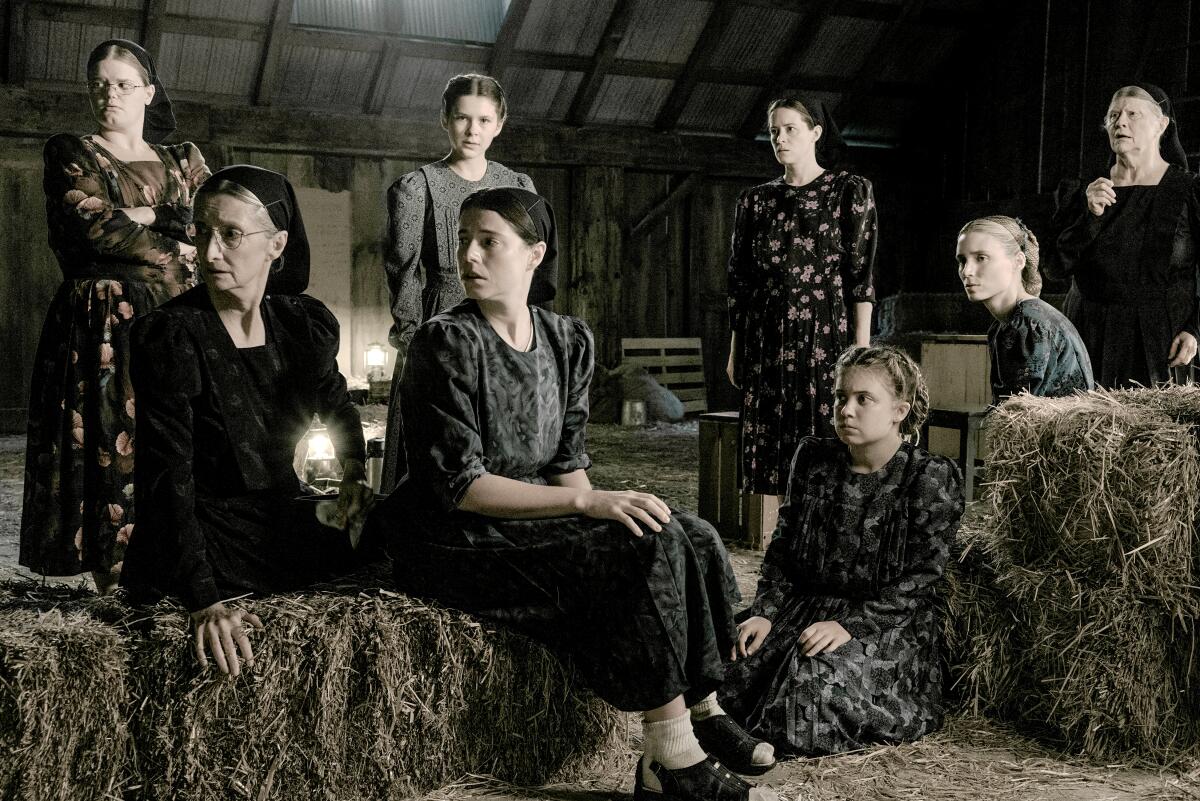
Leading up to this year’s Oscars ceremony, it’s tempting to ask impossible questions like: Why are movie sequels considered adaptations? Why the blanket snub for “White Noise”? And more generally, what do academy voters have against literary material? Instead, I reached out to the one living author whose story is represented among nominees for adapted screenplay (as well as best picture): Miriam Toews, who wrote the bestselling 2018 novel “Women Talking.”
Scripted and directed by fellow Canadian Sarah Polley, the adaptation captures Toews’ ultimate objective, making us consider the victims of misogyny: the real women and girls behind her story as well as women everywhere.
“Women Talking” is based on horrifying true events in a Mennonite colony in Bolivia. From 2005 to 2009, a group of male colonists repeatedly sprayed cattle tranquilizers into houses at night and violently raped hundreds of the community’s women and girls. The colony’s male leaders alleged that the victims were telling tales — or, given abundant physical evidence of the crimes, were bearing divine punishment for sins. Finally, women caught assailants entering their homes. The men confessed and leaders turned them over to law enforcement for their own safety.
“Women Talking” imagines that after the perpetrators’ arrest the women hold a vote on what to do. When this results in a tie between leaving and staying to fight, the women of two families are appointed to make a timely decision. These are the women we see talking in a hayloft, concealed from the community’s men.
Fed up with ‘casual sexual comments’ and ‘misogynist dismissal,’ the writer-director used ‘Women Talking’ to build a better film set. Here’s how
If your impression of Mennonites conjures pacifism and bonnets, Toews’ revelations about the still-populous fundamentalist contingents will jolt you. She depicts an authoritarian patriarchal culture on par with Taliban rule. Toews grew up in Steinbach, Manitoba, a member of the same Mennonite sect to which the book’s colonists belong. The founders of the Bolivian colony emigrated from Steinbach; they named their community Manitoba.
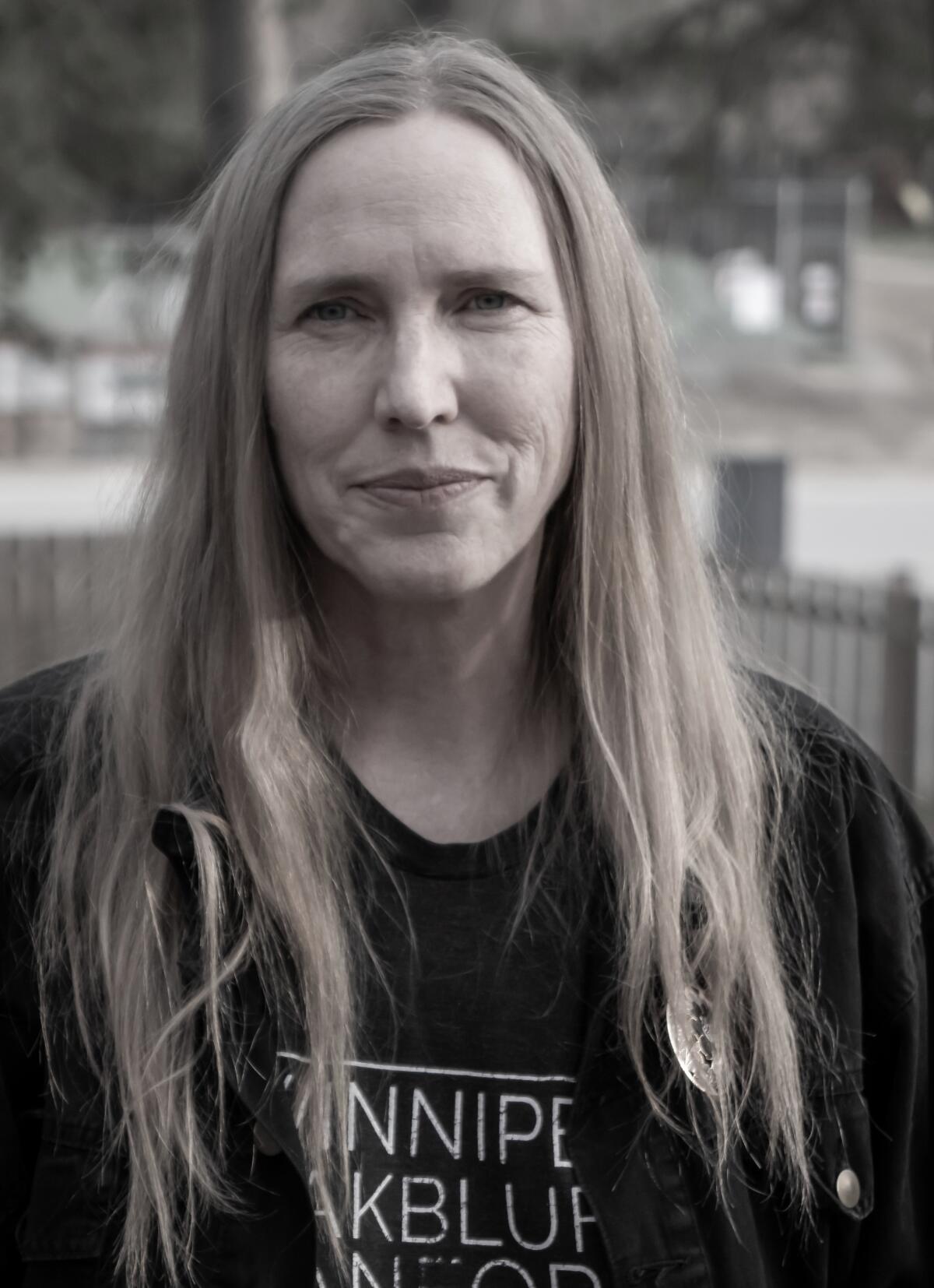
Toews was astonished to learn that her film is opening at Steinbach’s one movie house. “I was never, ever allowed to go, I could barely whisper the words ‘Keystone Cinema’ without feeling hot flames licking at my heels,” she said during an email interview. In the community, “many will know real victims of these crimes, or will be related to them in some way.” Other adherents have already seen the film. “There are stories of Mennonites going several times, groups of women, singing along to the hymns, giving the film standing ovations, and feeling that they are ‘in the movie.’”
The process of putting that movie together has been highly collaborative. Frances McDormand brought the book to fellow producer Dede Gardner, who also made last year’s “She Said,” an adaptation of the book about New York Times’ Harvey Weinstein investigation. The producers hired Polley, and the women agreed on the importance of humane working conditions for cast and crew: reasonable hours, breaks on request, an on-set therapist to help with the trauma-heavy material.
Polley spoke with Toews throughout, sent her drafts of the script and brought her to the set. Both women expressed the desire to keep the story from feeling too remote from the lives of a mainstream audience. Moments in both book and film remind us that the unthinkable events have many familiar aspects. They reflect common kinds of powerlessness among women and girls: being kept in ignorance of our own bodies, conscripted into uncompensated labor, subject to intimate assault, silenced and shamed by male authority figures — and worst, as one woman pronounces in the film, made to disbelieve ourselves.
After sweeping the guild awards, the best picture Oscar prospects for ‘Everything Everywhere All at Once’ appear golden.
The book only gradually reveals the full horror of the attacks. Early on we know the rough shape of the violence, but as the story continues, we learn that it extended to toddlers and elderly women; that it included incest and led to suicide; and that victims have become pregnant and infected with disease — all true to fact. “I tried to express the brutality of the attacks by flashes of detail,” Toews said. Honoring that strategy, Polley uses quick, nightmarish flashbacks of the assaults’ aftermath to make sense of what we’re seeing in the hayloft. “Sarah achieved the thing I was going for exquisitely.”
Girls in the colonies don’t learn to read and write, so the women ask August, an educated, friendly former exile, to take minutes of their meeting. That record is the novel and August its narrator, parsing and pondering throughout his notes, our proxy outsider. Polley minimized his narration in the script, then cut it completely in editing. Instead, she opted for voice-over from one of the cast’s adolescent girls. As we view scenes of colony life, substitute narrator Autje speaks to us lyrically — from the future.
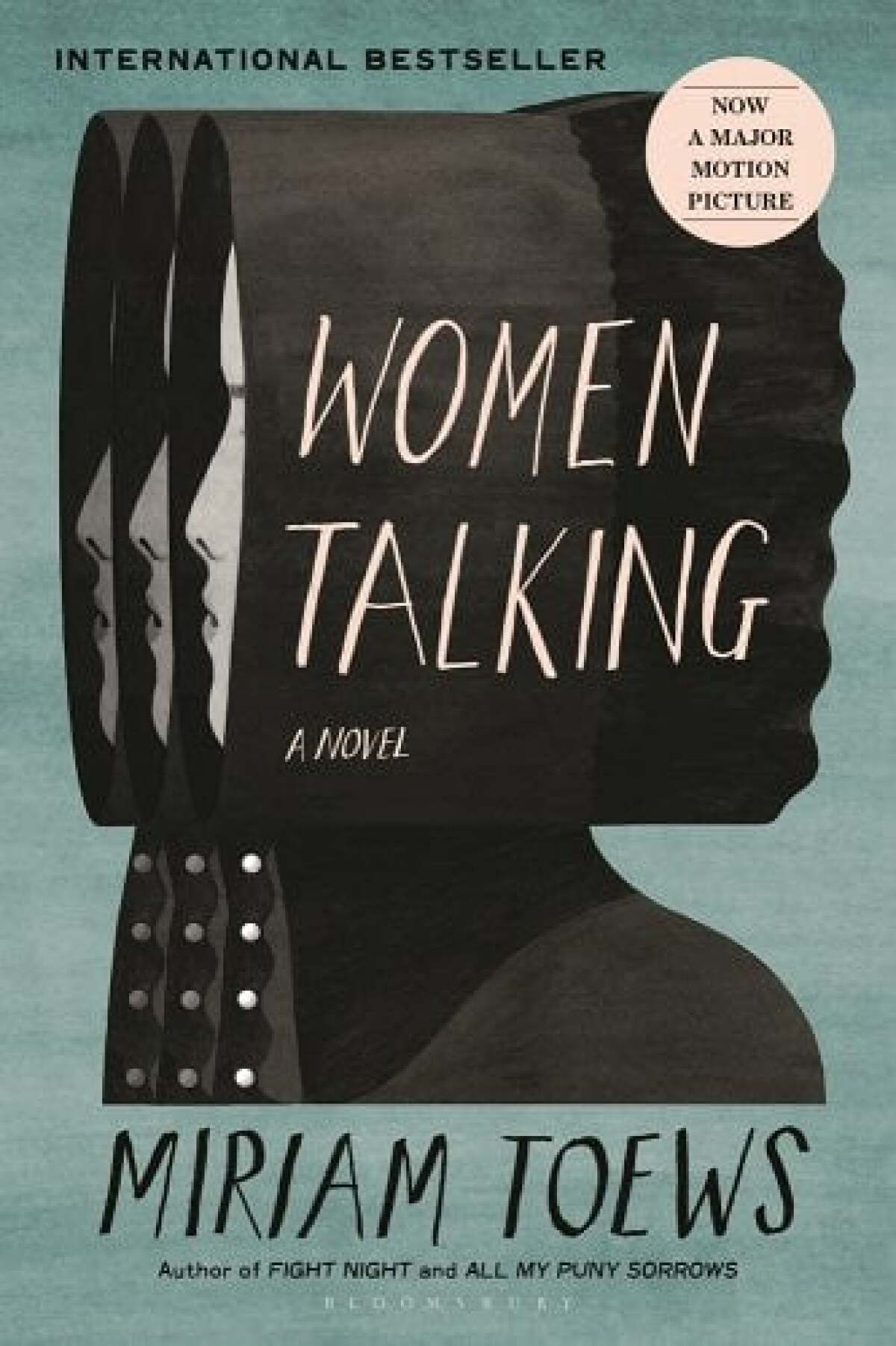
“There’s a certain comfort in that which I think really brings the conversations into sharp focus and keeps us tightly tethered to the hayloft,” Toews observed. “Sarah has made us not only understand, but feel how vital it is for the women to define their beliefs and their desires before coming to a decision.” Their daughters’ futures hang in the balance.
Polley intentionally elided contextual specifics from her script; we know only that the religion uses the Bible, the Southern Cross is visible and a 2010 census is in progress (a census taker drives through, speakers blaring a ‘60s pop song). The film also omits a few salient features of the women’s true disenfranchisement — for instance, that they know only a near-extinct language, and that the colony’s leadership denied them healthcare to keep the violence secret. But Toews called the film “its own true and artful thing” and notes one other change from her novel.
“The Monkees song surprised me! In the book, it’s ‘California Dreamin’.’ The two songs exist on slightly different emotional registers,” Toews said. “The Monkees song is a fun song and very catchy, pure joy. ‘California Dreamin’’’ is melancholy and yearning, with a somewhat gloomy metaphorical resonance.” Now she’s also grown attached to “Daydream Believer.”
Adapting the New York Times’ 2017 investigation of Weinstein meant turning to Ashley Judd, Gwyneth Paltrow and others who spoke out against him.
In real life, the rapists were tried and convicted and continue to serve time. But there’s word that the attacks have continued with different perpetrators and that some of the victims — under pressure both social and spiritual — have campaigned for the men’s release. I asked Toews if the idea of a coordinated exodus of women from the community was mostly fantasy. “Maybe unlikely and incredibly complex, and certainly fraught, but not a fantasy,” she said.
“Mennonites are continuously migrating en masse, and have been for centuries,” she added, “always moving from one place to the next to set up colonies and communities where they’ll be granted a type of self-governance and the freedom to practice their religion. It’s not hard to imagine a group of Mennonite women basically doing the same thing, but for reasons of their own.” On a smaller scale: “An immigration lawyer recently told me that she has worked on the cases of several Mennonite women, victims of sexual violence, who are seeking asylum in Canada, and that they qualify according to the requirements of refugee status.”
Producer Gardner has said that a successful adaptation makes its audience feel the same way they would at the end of the original book. “Women Talking” accomplishes that, closing on its note of faith and collective will for change. Let’s hope it brings on more than talk — and in the meantime, collects those awards.
Johnson’s work has appeared in the Guardian, the New York Times, Los Angeles Review of Books, the Believer and elsewhere. She lives in Los Angeles.
More to Read
Sign up for our Book Club newsletter
Get the latest news, events and more from the Los Angeles Times Book Club, and help us get L.A. reading and talking.
You may occasionally receive promotional content from the Los Angeles Times.
